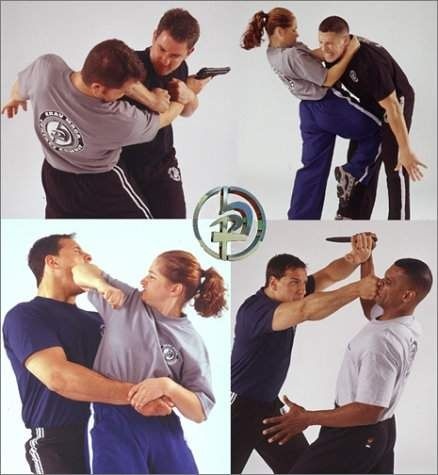People get mugged all the time.... people got snubbed all the time.... If you are week it means your survival is Challenged by other people. here we strongly feel need of SELF DEFENSE 
There are many ways of making your self defense strong. You can keep Guns You can Keep any lethal weapon. But this might run you into some legal trouble...So the Better Way is to Equip your self with techniques and Methods which will help you in making your self defense strong
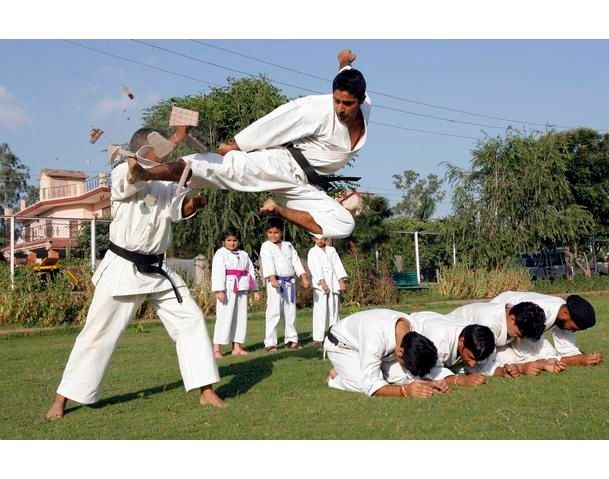
There are many self Defense Techniques and Methods which you can follow
Muay Thai

Muay Thai is referred to as “The Art of Eight Limbs”; and using eight points of contact the body mimics weapons of war. The hands become the sword and dagger; the shins and forearms were hardened in training to act as armor against blows, and the elbow to fell opponents like a heavy mace or hammer; the legs and knees became the axe and staff. The body operated as one unit. The knees and elbows constantly searching and testing for an opening while grappling and trying to spin an enemy to the ground for the kill.
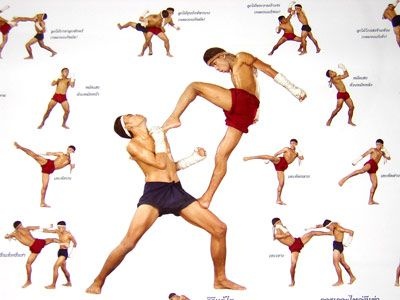
Muay Thai has several other variants of the clinch or chap kho [ including:
- arm clinch: One or both hands controls the inside of the defender's arm(s) and where the second hand if free is in the front clinch position. This clinch is used to briefly control the opponent before applying a knee strike or throw
- side clinch: One arm passes around the front of the defender with the attacker's shoulder pressed into the defender's arm pit and the other arm passing round the back which allows the attacker to apply knee strikes to the defender's back or to throw the defender readily.
- low clinch: Both controlling arms pass under the defender's arms, which is generally used by the shorter of two opponents.
- swan-neck: One hand around the rear of the neck is used to briefly clinch an opponent before a strike.
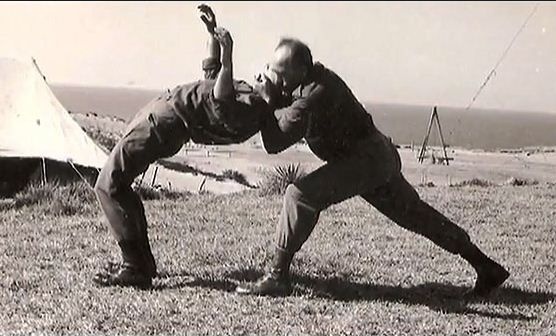
Defense against attacks
Defenses in muay Thai are categorized in six groups:
- Blocking – defender's hard blocks to stop a strike in its path so preventing it reaching its target (e.g. the shin block described in more detail below)
- Redirection – defender's soft parries to change the direction of a strike (e.g. a downwards tap to a jab) so that it misses the target
- Avoidance – moving a body part out of the way or range of a strike so the defender remains in range for a counter-strike. For example, the defender moves their front leg backwards to avoid the attacker's low kick, then immediately counters with a roundhouse kick. Or the defender might lay their head back from the attacker's high roundhouse kick then counter-attack with a side kick.
- Evasion – moving the body out of the way or range of a strike so the defender has to move close again to counter-attack, e.g. defender jumping laterally or back from attacker's kicks
- Disruption – Pre-empting an attack e.g. with defender using disruptive techniques like jab, foot-thrust or low roundhouse kick, generally called a "leg kick"(to the outside or inside of the attacker's front leg, just above the knee) as the attacker attempts to close distance
- Anticipation – Defender catching a strike (e.g. catching a roundhouse kick to the body) or countering it before it lands (e.g. defender's low kick to the supporting leg below as the attacker initiates a high roundhouse kick)
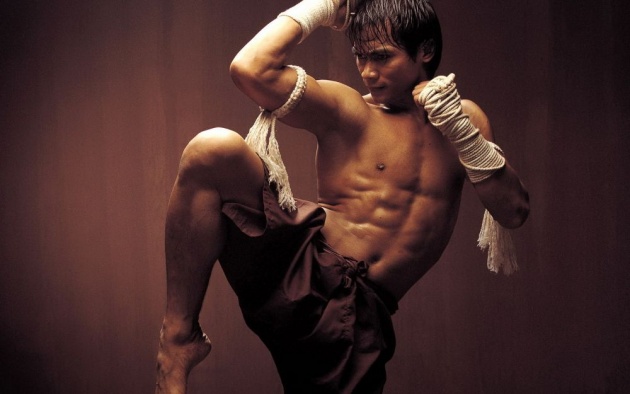
Punches and Kicks
Defensively, the concept of "wall of defense" is used, in which shoulders, arms and legs are used to hinder the attacker from successfully executing techniques. Blocking is a critical element in muay Thai and compounds the level of conditioning a successful practitioner must possess. Low and mid body roundhouse kicks are normally blocked with the upper portion of a raised shin (this block is known as a 'check'). High body strikes are blocked ideally with the forearms and shoulder together, or if enough time is allowed for a parry, the glove (elusively), elbow, or shin will be used. Midsection roundhouse kick can also be caught/trapped, allowing for a sweep or counter-attack to the remaining leg of the opponent. Punches are blocked with an ordinary boxing guard and techniques similar, if not identical, to basic boxing technique. A common means of blocking a punch is using the hand on the same side as the oncoming punch. For example, if an orthodox fighter throws a jab (being the left hand), the defender will make a slight tap to redirect the punch's angle with the right hand. The deflection is always as small and precise as possible to avoid unnecessary energy expenditure and return the hand to the guard as quickly as possible. Hooks are often blocked with a motion sometimes described as "combing the hair", that is, raising the elbow forward and effectively shielding the head with the forearm, flexed biceps and shoulder. More advanced muay Thai blocks are usually in the form of counter-strikes, using the opponents weight (as they strike) to amplify the damage that the countering opponent can deliver. This requires impeccable timing and thus can generally only be learned by many repetitions.
More Techniques and articles coming soon

